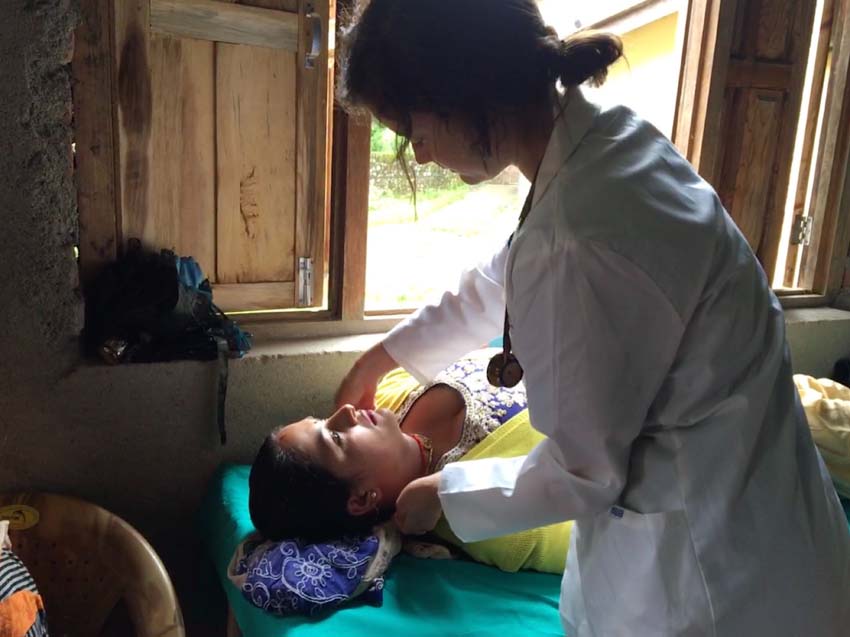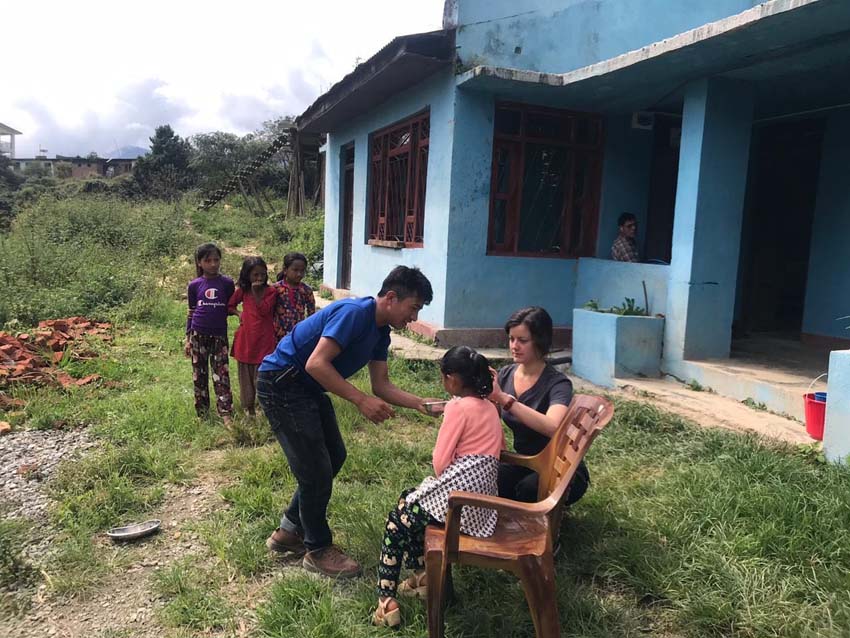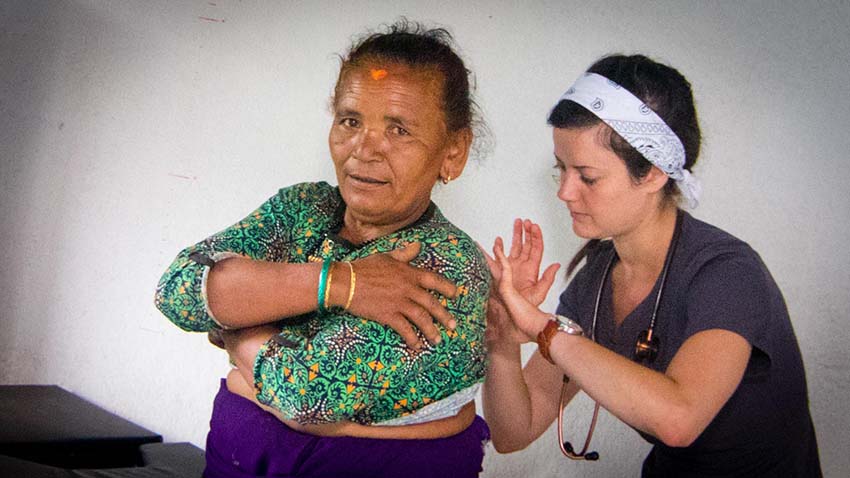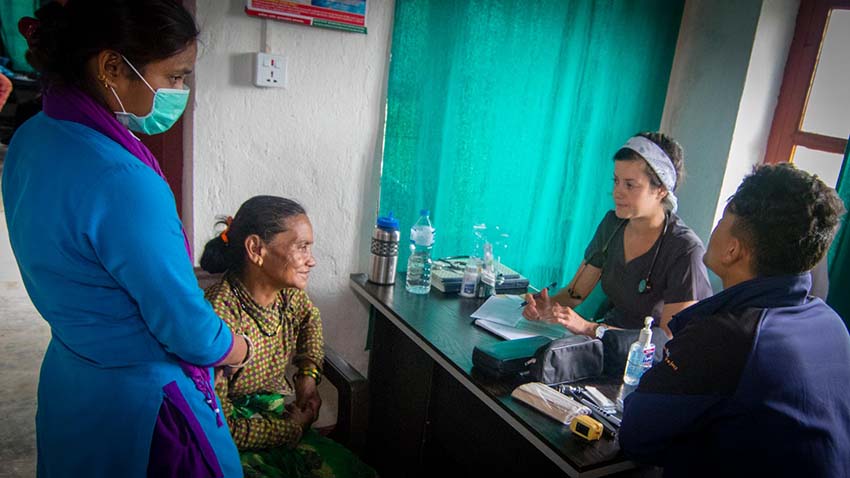
Four years ago I fell in love with the most impoverished district of Nepal called Humla. Though I was there to research malnutrition, I quickly realized the desperate need of doctors in these vast Himalayan mountaintops…where ironically most doctors, even from Nepal, refuse to venture. But it seemed unpractical to be a conventional medical doctor where x-ray machines and pharmaceuticals were unaccessible. Enter naturopathic medicine. These past four years, I have dedicated to learning herbal therapy, water therapy, nutrition, spinal adjustments, counseling, homeopathy, acupuncture, and lifestyle modifications. And now, it is time to find out if all these skills I have accumulated can touch the medical aliments that Nepal faces.
This venture back to Nepal is through Acupuncture Relief Project - an amazing non-profit in Nepal that utilizes acupuncture in the delivery of primary medicine in the Makwanpur District. Though I’m not an “acupuncturist” the organization hosts many medical providers of other disciplines. I’m using this experience as a stepping stone to doctoring in Humla in the future (a longterm goal that I am quickly realizing is much more difficult to achieve than I anticipated).

At this point I have been naturopathic doctoring in villages for a total of four weeks. Having graduated naturopathic medical school just three months ago, the learning curve is STEEP but thrilling. The hardest part thus far has been informing patients that not only will I not be able to “fix” them but that their condition is likely to get worse. For example:
- My patient who has likely kidney failure, partial blindness, and an enlarged heart as a result poorly controlled diabetes
- My elderly patients who complain about hearing loss that can only be fixed with a hearing aid
- The woman who had her breast removed years ago due to breast cancer and now has extreme edema that will likely never subside because her lymph nodes were removed in the surgery

On the other hand, there are many patients who we have celebrated at their bettering of health…making each day a celebration! For example:
- My two female patients who struggled to lift their arms from pain but can now lift their arms above their heads
- My patients who presented with chronic knee pain who can now squat without pain
- My itchy patients who can now sleep peacefully and itch-free.

If you can’t tell, it’s a bit of a whirlwind of emotions seeing 100 patients a week alternating in good and bad news. Which makes me thankful for my time on the motorcycle before and after clinic every day…yes…motorcycles - let me explain…
Our home-base clinic is in a town called Bajrabarahi. The clinic is on the first floor and we live on the second floor. However, I have not worked a single day in the home-base clinic. Instead, my role has been to help start up clinics in three nearby villages. So every week I spend two days in Taukhel (a 15 minute drive away), two days in Markhu (25 minutes away), and two days in Chitlang (35 minutes away). Each village seems to have its own theme. Taukhel is full of ear cases - ear infections, wax impacts, hearing loss, ear ringing, etc. Markhu is full of multiple joint pains and a recently confirmed TB lung infection! And Chitlang is full of diabetes and hypertension. Though each village feel drastically different, I can honestly say that I love each one and the patients that fill them.

I was surprised to find that many of my patients from these villages have never been to a doctor! And as the weeks go on, more and more people from distant villages are traveling to the clinic in search of relief. Just yesterday we had two women who walked 3 hours to reach us! I have mixed feelings about this: One part of me is honored that patients are traveling long distances to see us. Another part of me is saddened that patients have to travel long distances to see doctors in general. And a final part of me feels completely responsible to make them “better”.

But overall, I am delighted to report that I feel adequately equipped to be a village doctor with my naturopathic training. In fact, the whole purpose of writing this blog is to encourage more strong but tender-hearted people become naturopathic doctors for this reason. Before venturing back to Nepal with my new white doctor coat, I searched high and low for naturopathic advice for practicing in developing countries and found….NOTHING. So for those of you planning to utilize your naturopathic tools in places that there are no doctors, I hope you find my collection of blogposts useful. But in summary, here are some of my biggest tips for future village NDs:
- Most patients are not emergencies. Though their blood pressure may be through the roof or their oxygen severely low, keep in mind that their body has been managing and compensating without medication. Get to know their cases well and treat appropriately before making rash decisions (such as referring your patient to a clinic that is difficult and expensive for them to reach).
- Learn your local herbs and utilize them well. For example, calendula, dandelion, and holy basil grow rampant here, and most women have turmeric available in their kitchens. Several of my patients have had digestive issues soothed with a simple prescription of turmeric tea two times a day.
- Become efficient at some type of body therapy that can alleviate chronic pain: Acupuncture, Bowen therapy, chiropractic adjustments…the majority of patients have chronic low back pain or knee pain that can be attributed to carrying heavy loads for miles over the course of their lifetime. It’s important to tell patients that we are not able to grow the cartilage back but we may be able to decrease their pain. (Side note: patients LOVE when you put something topical on their joint pain).
- Don’t be afraid to use pain medications. When patients are traveling for hours to come and see you, it may be counterproductive to have them come in for treatment every week. Instead, have them manage their inflammatory cycle at home by dosing pain medications in an efficient manner: 7 days on, 7 days off, 5 days on, 5 days off, 3 days on, 3 days off, 1 day on, stay off. Have them come back to see you or repeat this protocol if the pain relapses. As much as we hate stomach, liver, and kidney side effects of pharmaceuticals…this really may be your patient’s least invasive and most effective option.
- LISTEN to your patient. Half of the therapy is simply listening to your patient’s problems. For some of my patients, it’s the first time they have ever been to a doctor. They just want you to listen to what’s happening…this is where the healing begins.
- LOOK at what is hurting/itching/burning. When things get crazy and busy in clinic, don’t get lazy. I hate to admit it, but I had one patient with shoulder pain who could only lift his arm to 30*. After treating two elderly women and getting their shoulder range of motion back to nearly 100%, I became overconfident. “No problem, I said…I think we can get you out of pain and moving freely after a few treatments.” Come to find out, his shoulder was dislocated and had been for 3 MONTHS…I hadn’t even taken the time to LOOK.
- Become familiar with heart and lung sounds. Utilize the herbs thyme or holy basil steam inhalations for COPD and carry a packet exemplifying 6 grams of salt for your patients with hypertension (the max amount they should be eating every day).
- IF YOU DO REFER A PATIENT make sure to be very clear about your findings, what you want the doctor to evaluate, and your advice on which prescriptive medicine in best.

And the adventure has only begun : ) ---- Dr. Chelsea Leander, ND
www.LeanderMeanders.wordpress.com












